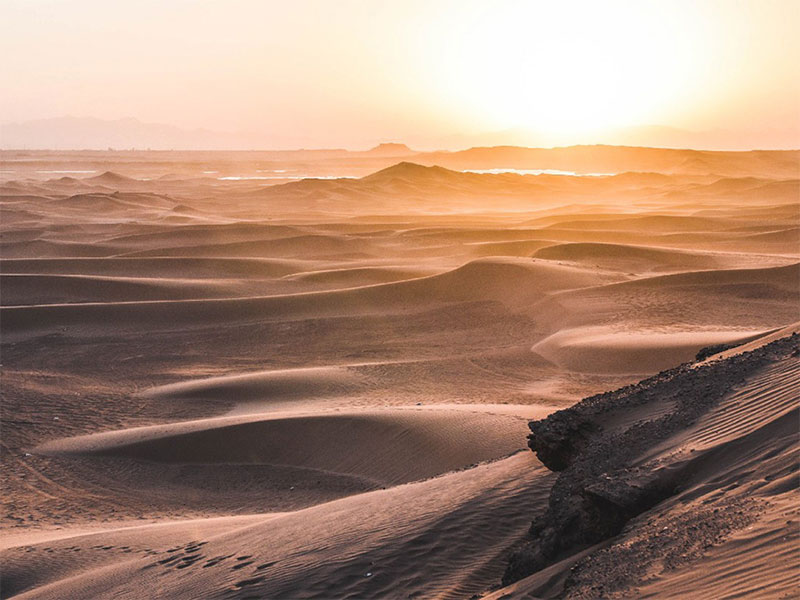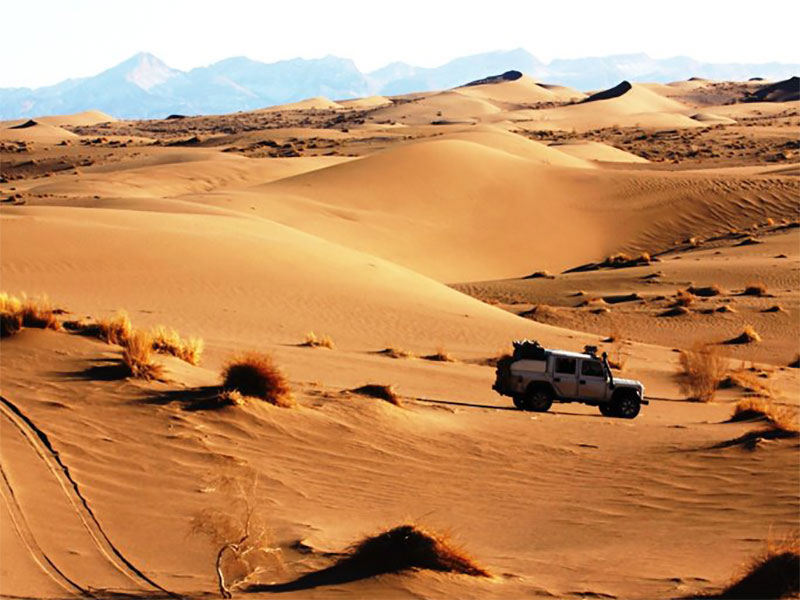
You may like visiting deserts for many different reasons, particularly as an adventurer. Deserts offer high potential for a wide range of adventure activities, including paragliding, off-road, sand-boarding, and even hiking. Photographers are also fond of deserts for their own good reasons. No matter why you are interested in these infinite areas of sand dunes, traveling to Iran would offer you loads of opportunities to reserve a desert tour and spend a few days in such landscapes. Read about Dasht-e Kavir in Iran.
Dasht-e Kavir is the largest desert of Iran that extends from the southern slopes of Alborz to the central part of Iran. Its length is 800 km and the width is about 600 km, mostly covered with large swamps and is scattered on the edge of sand dunes and heights.
Tens of millions of years ago, a salt lake surrounded this desert and surrounded a small territory that is now located in central Iran. After the water of this lake dried up, a layer of salt with a thickness of 6 to 7 km was formed in this area. Dasht-e Kavir is also considered one of the thermal poles of the earth. The air temperature sometimes reaches 50 degrees Celsius during the day and the temperature difference during the day and night is 70 degrees. The vegetation of this area is mostly of saline plants (halophyte).

Dasht-e Kavir is considered one of the thermal poles of the earth.
The soil of the desert plain is completely barren and not suitable for agriculture. There is no adequate potable water in the area and this environment is completely uninhabited. The dangers of the desert have prevented researchers from exploring all areas. The vast plain is divided into three categories in terms of vegetation. The central core, which is completely hot and dry and lifeless, is still unknown. Around this core, there are plants that are compatible with saline soils and desert lands, and animals such as deer live in it; and the third part is desert margins and plains such as Moghan, where agriculture is carried out despite the salinity of the water.
Bermuda Triangle of Iran
Rig-e Jenn is the most amazing, mysterious, and scary region of Iran, with terrible swamps that can bring death to any living thing passing the desert. Many unjustified incidents have taken place in this region, and the salt marshes of this region have been the place of killing and burying many visitors.
Drowning in mud and silt in “Rig-e Jenn” is perhaps one of the most dangerous events that can lead visitors to death. For many years, no one dared to travel to the region and discover the secret of this mysterious desert, or even if he did, he was left because of his unfamiliarity with the region. The lack of water resources in the vast area of sand dunes, along with the presence of natural barriers such as salt marshes and high sand dunes, have been recognized as factors that have kept the area out of human reach for centuries.
From 1997, adventurers started to pass here and visit the amazing region with full equipment. Even today, adventurers and desert lovers are strongly recommended to visit Rig-e Jenn with a professional tour guide, full equipment, and food/ drink for 14 days! Rig-e Jenn tour is among the most popular ones for adventurers.

Rig-e Jen is the most amazing, mysterious, and scary desert of Iran.
Dasht-e Kavir Weather: The best time to visit
Dasht-e Kavir’s climate is arid; receiving little precipitation. There is usually some rainfall during winter resulting in the creation of some seasonal lakes, marshlands, and playas.
Temperatures can reach 50 °C (122 °F) in summer, and the average temperature in January is 22 °C (72 °F). The temperature varies greatly during day and night, and just like other deserts, the weather is quite cold during the nighttime. Therefore, late fall and winter would be the best time to enjoy visiting the area and experience some adventure activities.
Are you planning to travel to Iran and looking for some adventure? Check out our Iran Desert Tours.
